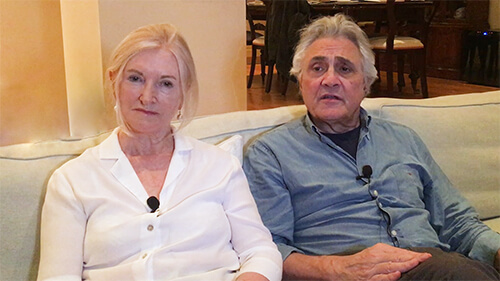
Page contents
The choice to move into a care home or nursing home is rarely easy and the decision tends to be made by a family member who has found the fulltime job of caring has become overwhelming and all-consuming.
When is the right time to move into a care home?
Knowing when it is time to start finding a care home can be tricky. Waiting for the perfect time may mean you leave it to a point where you and your loved one are really struggling.
If your relative is elderly, you may notice they are having an increasing number of falls or they are not eating properly and may be getting disorientated and confused.
If you feel worried about your loved one, the first step is to get a Care Needs Assessment. You can then use the resources on this website for help with choosing a care home that meets the level of care your loved one needs.
Signs it’s time to consider a care home
Possible signs someone needs care home care include:
- It is becoming unsafe for your loved one to live alone, or they feel unsafe living alone.
- Their home may no longer be safe for their needs, e.g. steep stairs, poor heating, located somewhere with little public transport.
- Dementia is causing them to become increasingly confused and distressed.
- They need supervision due to health reasons.
- They would greatly benefit from consistent company; loneliness can be extremely detrimental to physical and mental health.
- They are struggling to maintain good hygiene and/or good nutrition; home care can be fantastic support with this but if they need more specialist equipment than their home can accommodate, a care home may be preferable.
- They need specialist care that is challenging to deliver in their own home.
- Carer support – If you’re the main carer for a vulnerable older person, but you feel overwhelmed and no longer able to provide adequate support, then residential care might be the next step. You can request a Carer’s Assessment if you need support.
If you are unsure about whether it is safe for your loved one to live in their own home, you can request a free care needs assessment from their local council. This means a professional can assess if your loved one is safe to live at home and if it is the right time for them to move to a care home.
Find your ideal care home
- Explore a wide range of care options and facilities
- Read independent ratings and reviews
- Connect directly with care homes to book a tour and discuss your needs
‘It’s important to know when to let go’
Wendy Burton, who was forced to put her husband Ian into a care home, after he was diagnosed with Behavioural Variant Frontotemporal Dementia (bvFTD), says that while it is always difficult to decide to put a loved one into care, it’s important to know when to “let go”, because “you can battle and battle but it will never go away”.
Ian, a former soldier and a technical support worker for Derbyshire Police, lives at Barrowhill Hall care home in Staffordshire.
When he first started behaving strangely, his wife Wendy could not have imagined that at just 50 years old he had dementia.

Ian’s bvFTD affects the parts of the brain responsible for complex thinking, personality and behaviour.
Wendy says: “He’d always been fairly quiet and he became very extroverted and went out drinking.”
After receiving his diagnosis, she decided to care for him at home, but it proved to be increasingly challenging.
Ian became restless and wanted to walk all the time: “He would spend nearly all day coming in and out and walking.” He soon developed a very short attention span. For Wendy and the home care workers who came to help, it was a job just keeping Ian occupied.
“We couldn’t keep him indoors,” said Wendy. “He was in and out of other people’s houses and the whole experience was very stressful.
“We’d got carers coming in and taking him out, but they were finding it increasingly difficult to cope with him when he was out. He’d rush ahead and rush into pubs and order drinks and he’d got no money for them and he shouldn’t have been having them anyway.”
Ian’s family ‘felt they couldn’t keep him safe anymore’
By this time, his family felt that they “couldn’t keep him safe anymore” and that it may be the right time to move Ian into a care home.
Wendy reveals: “We missed him but it was a relief to know he was safe and well-cared for.”
Wendy, who now works as a dementia advisor for the charity Making Space in Derby, advises carers unsure of when to put their life partners or relative in residential care to “research care homes even before there are any signs of anything, go and look at places and just park that and just look for signs when you’re struggling.
“You’re never going to beat the disease, the disease will always win, so when you find that you’re struggling, you’re becoming exhausted, revisit those places that you’ve already researched. Take the person along to have a look as well.”
She also says: “Don’t beat yourself up, don’t feel guilty about that. It’s not that people want to put people in care, it’s that they can’t care for them at home anymore. Actually, your relationship mends itself and becomes stronger again because a lot of the stress and exhaustion is taken away from you.”
One solution for couples can be to move into a care home together
Caring for someone you love can be both emotionally and physically exhausting. Fred Varden has been with his wife Sheila for over 50 years. When she was diagnosed with Parkinson’s Disease at the age of 41, Fred cared for her himself for 30 years.
He says: “What a lot of people don’t realise is that caring for a loved one can be very stressful. Basically we were looking for a solution and there didn’t seem to be one, I was getting quite depressed about the whole thing. I was having to speak to my GP and have counselling, that’s how bad it does get for a lot of carers.”
They started using home care, and while this eased the burden, Fred was still very much on call. He says: “When a carer’s been to the home say, at lunchtime and provided personal care, then if there’s an incident between then and teatime, who does it?”

Sheila’s needs start to become more complex and their GP advised that they seriously start looking at care homes but living separately wouldn’t be easy.
As Fred says: “If say, she took a place in the local care home, which there was one, that would’ve been her living on her own, me living on my own in a three-bedroom house and me visiting every day, me coming away, she’s upset and I come back home feeling guilty.”
Both struggled with depression under the strain of the situation, until they stumbled upon a solution. Borne from a desire to go on accessible holidays together, the couple had respite stays at a care home by the sea at Lytham St Annes, then took the leap to move in full time – together.
Fred and Sheila have never regretted their decision
The day they moved into Lakeview Rest Home’s The Moorings, Fred says: “We were laughing and happy. We’ve both said since it’s a really strange feeling, after living in a house for over 40 years, we don’t miss it at all”. They have never regretted their decision, because: “It had got to that point where it just wasn’t possible anymore”.
Fred now doesn’t have to deliver any of Sheila’s care himself, where once he did it all. They are thriving and can enjoy just being Fred and Sheila again, especially with the great choice of activities on offer and the prime location of the care home. Living together in a care home works better for them than home care did, as they benefit from more “freedom of choice” and staff that are “never in a rush”.
Fred’s advice for anybody who isn’t sure of the right time to move into a care home is:
“Don’t leave it till the stage when it’s making the other partner ill. If the carer goes down, it’s a domino effect. Caring for a loved one can be very stressful and a lot of people are in denial. At that point, people need to consider going for a chat with the GP; I should’ve asked for support two years earlier.”
Fred is a poet, who has performed to the likes of Princess Anne and regularly raises money for charity with his work. To read some of his poetry, particularly his poem ‘When did I sign up for this?’ about his life as a carer, visit his website.
This video provides five tips to help you find the care home best suited to your needs.


